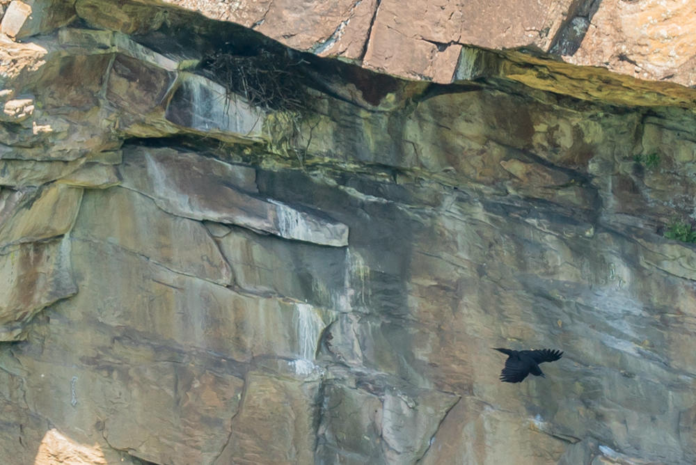
A rare raven nest has been spotted on a canyon cliff in Northeast Georgia’s Tallulah Gorge State Park.
As a species, ravens are rare in Georgia and most years there isn’t a nest sighting, said Bob Sargent with the Georgia Department of Natural Resources.
Ravens used to be more abundant in the eastern U.S., but by the 1930s, their numbers had declined, likely due to a loss of forested habitat, disturbance of raven nest sites, and persecution of the species.
“But the good news about ravens in the eastern United States is that survey data since the mid-1960s indicates that in the East as a whole, they appear to be increasing their population size on the order of something like 2% per year,” Sargent said. “So that’s a very encouraging trend.”
Over the past 20 years, Sargent said only two known raven nest locations have been confirmed: one on a cliff at Brasstown Bald and another on Nottely Lake Dam near Blairsville.
He said it’s encouraging to spot a nest at Tallulah Gorge.
“Here in Georgia, you know, finding one nest in any given year continues to be a big event, but we’re hopeful that this increasing trend of the species in the eastern United States will also be reflected in raven activity, raven nests and numbers, here in Georgia,” Sargent said. “We primarily see them in just a handful of very northeastern counties, up in the Blue Ridge area. So seeing them a little bit further south down at Tallulah Gorge is a good sign.”
From Overlook No. 9 at Tallulah Gorge State Park, with strong binoculars or a spotting scope, you can see two roughly 6-week-old raven chicks in the nest, Sargent said.
He and Kim Hatcher, public affairs coordinator for Georgia State Parks and Historic Sites, visited the location late last week.
“Because the nest is back a little bit in a crevice, what you see the most with your binoculars are their beaks,” Hatcher said. Their beaks are yellow and so we kind of look for the movement of the beaks.”
She says afternoon viewing may be the best because the sun “illuminated the canyon a little bit better.” She adds that birdwatchers interested in seeing the nest should visit the visitor center for trail information and that part of the trail doesn’t allow dogs.
But the raven chicks will not be there for long. Sargent estimates they’ll leave the nest within a week. But that’s just an estimate, he said. They could leave sooner or even later. When they do leave, he said, they’ll likely stay in the area for a few weeks as they learn to how to be ravens.
This article appears on Now Habersham in partnership with GBP News








